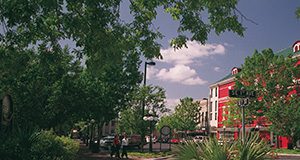Abstract
The urban forest is a crucial factor in the well-being of a community because of the aesthetics, health benefits, and cost-savings that it provides. The urban forest is our habitat, and we must manage it in ways that will provide the benefits we need and desire. This 3-page fact sheet written by Michael G. Andreu, Caroline A. Hament, David A. Fox, and Robert J. Northrop and published by the UF/IFAS School of Forest Resources and Conservation describes an urban forest ecological analysis conducted in 2016 in Gainesville, Florida, by the University of Florida in partnership with the Parks, Recreation, and Cultural Affairs Department to quantify the vegetation structure, functions, and values of the urban forest.
http://edis.ifas.ufl.edu/fr414
References
Abdollahi, K., A. Ning, and A. E. Appeaning. 2000. Global climate change and the urban forest. Baton Rouge, LA: GCRCC and Franklin Press.
Andreu, M. G., D. Fox, S. Landry, R. Northrop, and C. Hament. 2017. Urban Forest Ecological Analysis. Report to the City of Gainesville, March 2017. City of Gainesville, Florida.
Andreu, M. G., B. J. Tamang, M. H. Friedman, and D. Rockwood. 2008. The Benefits of Windbreaks for Florida Growers. FOR192. Gainesville: University of Florida Institute of Food and Agricultural Sciences. http://edis.ifas.ufl.edu/fr253
Nowak, D, S. Hirabayashi, A. Bodine, E. and Greenfield. 2014. Tree and forest effects on air quality and human health in the United States. Environmental Pollution. 193: 119-129. https://doi.org/10.1016/j.envpol.2014.05.028
Nowak, D., and J. Dwyer. 2007. "Understanding the benefits and costs of forest ecosystems." In J. Kuser, Handbook of Community Forestry in the Northeast (2 ed., pp. 25-46). Syracuse, NY: USDA Forest Service. https://doi.org/10.1007/978-1-4020-4289-8_2
Unless otherwise specified, articles published in the EDIS journal after January 1, 2024 are licensed under a Creative Commons Attribution-NonCommercial-NoDerivs 4.0 International (CC BY-NC-ND 4.0) license.

